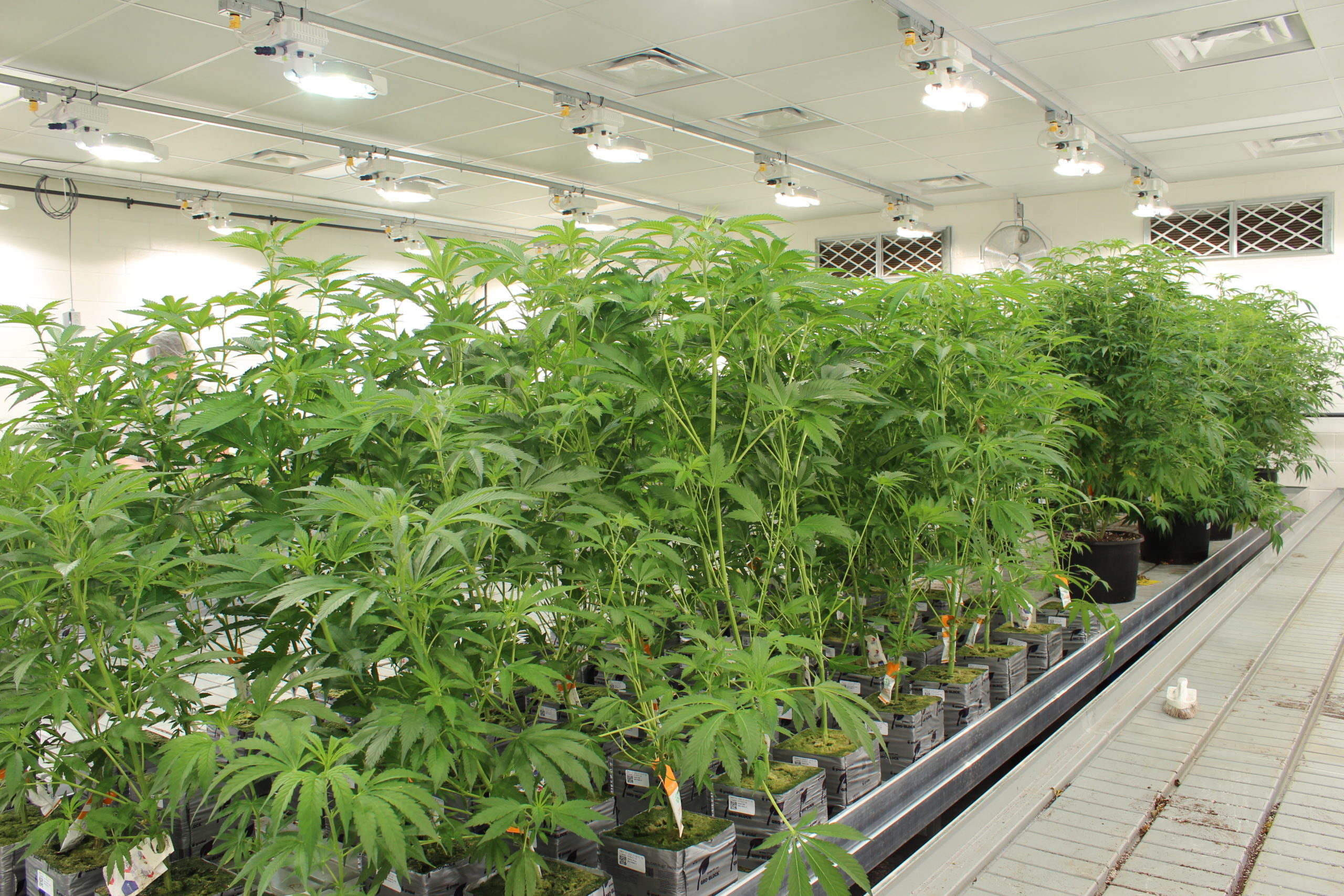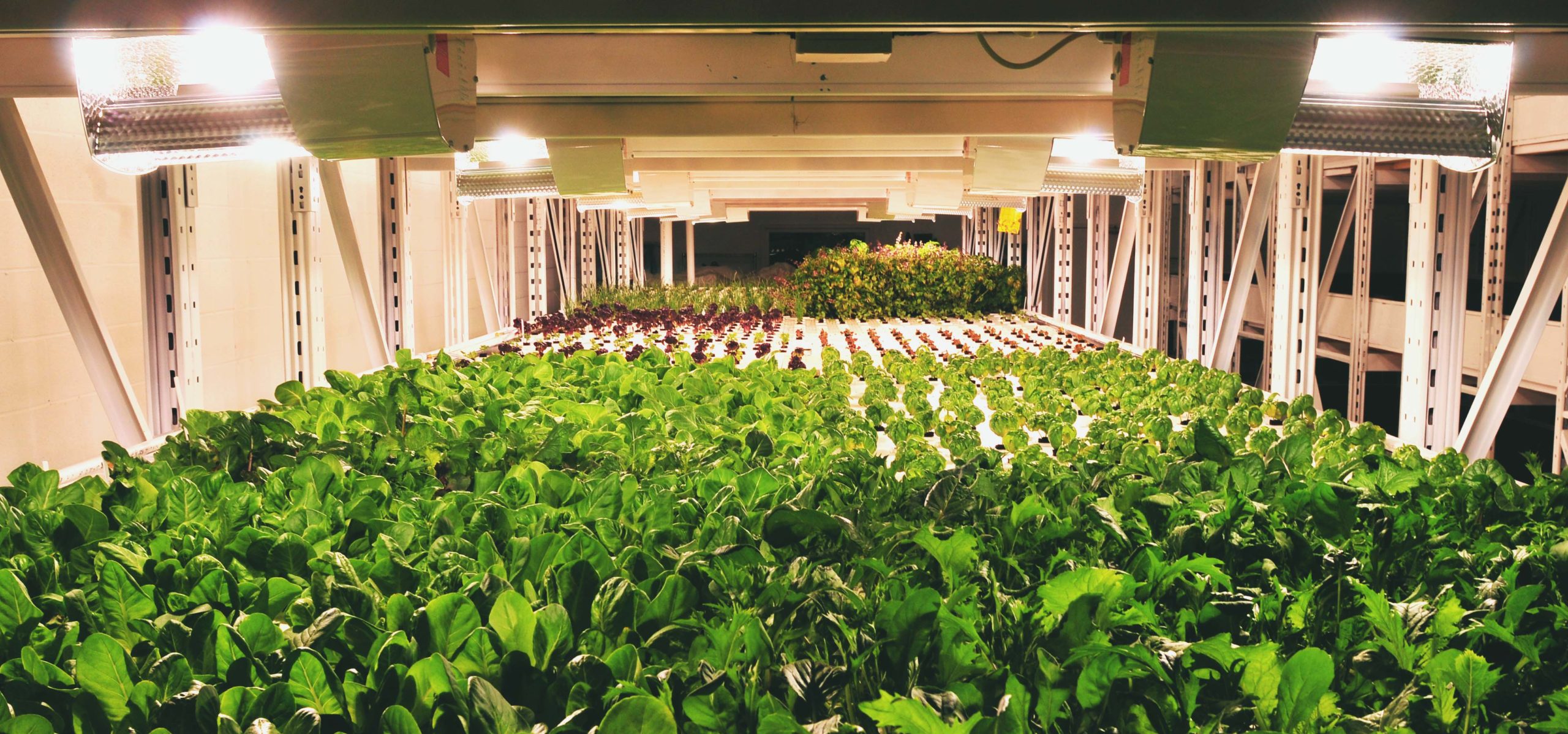We often get asked what the difference is between metal halide (MH) and ceramic metal halide (CMH) luminaires. While they both have similar technologies, there are some fundamental differences in how they operate.
To start, they are both high-intensity discharge (HID) lamps that can be used for growing plants. Both lamps contain metal halides or salts and are comprised of two main sections – an outer bulb and an inner arc tube. In general, MH and CMH lamps have been traditionally used in vegetative growth cycles because of their balanced spectrum and higher emittance of blue wavelengths. Plants that benefit most from metal halide lamps are vegetables like leafy greens and herbs. These grow lights are also helpful for cannabis during vegetative and mother growth stages. This is because the higher blue spectrum limits internode stretching, producing bushier, more compact plants while also limiting the flowering response.
On the other hand, high-pressure sodium (HPS) lamps are traditionally used as a flowering and production spectrum because of their high emittance of red wavelengths, which are most efficient for inducing flowering and promoting fruit development in plants. Another similarity between MH and CMH lamps is they both emit some UV wavelengths. This can benefit plant health by promoting the defense response and increasing the synthesis of secondary metabolites.
What are MH lamps?
MH lamps contain metal halides that emit light when heated. The lamps have two electrodes. When voltage is supplied, electricity passes from one electrode to another. This heats the mercury inside, causing it to vaporize and the electrical current to grow. The metal halides then turn into gas, and the metal halide atoms begin to move away from the arc. In doing so, a light is created.
MH lamps can emit various shades or colors of light depending on the types of metal halides used. For vegetative growing stages, the most common color emitted is blue-white to promote bushy growth habits and compactness. Quartz glass is often used to make the arc tube, which can erode over time and diminish light output. This can lessen the overall lifetime of the lamp, meaning MH lights require re-lamping sooner than with other types of HIDs. This design can make MH lamps more unstable in terms of maintenance, longevity, and spectrum output.

What are CMH lamps?
The largest difference between MH and CMH lamps is the Ceramic or “C” in CMH. This refers to the arc tube made of a ceramic material, similar to what is used for HPS lamps. This material is more stable than the quartz glass used in MH lamps, can withstand much higher temperatures, and is more resistant to aggressive salts. With a higher temperature inside the arc tube, the efficiency, color stability, and overall light maintenance are greatly improved.
With CMH lamps, because of their design, you get a more balanced spectrum of light, similar to sunlight. This helps your plants grow and develop as they would outdoors. In addition, when it comes to people and work environment, CMH lamps have a higher color rendering index (CRI), making for a more pleasant work environment. Workers can also better assess plant health in sole source lighting conditions.
With the broad spectrum emitted by CMH lamps, you can see many advantages in the morphogenesis of the plants, including the production of terpenes, flavonoids, and other secondary metabolites from the UV and blue wavelengths. However, due to the lower emittance of red wavelengths compared to HPS lamps, CMH grow lights are not recommended as a flowering or production spectrum (unless you are growing leafy greens or herbs). A good option, if you want the added benefits of CMH lamps in your production cycle, would be to install a hybrid HPS-CMH system so you get the most balanced spectrum, including that higher red for the flowering response.
Another advantage when using the CMH lamp is the lower wattage – only 315 watts compared to a metal halide lamp that is often 600-1000 watts. A lower wattage means you can get closer to the crop canopy without burning and have greater energy efficiencies.

Which should I use?
One thing to make clear is you cannot simply replace an MH lamp fixture with a CMH lamp. CMH lamps require a specific ballast for ignition. This is why we offer our 315W NXT-LP CMH as a stand-alone luminaire. That could be a disadvantage to you if you are looking at using the same growing space for both vegetative and flowering cycles. In this case, MH lamps would be your best option as they can be housed with the same ballast as HPS lamps.
However, if you have separate vegetative and flowering rooms or are growing solely greens or herbs, CMH lamps will make more sense. A lower wattage than MH lamps means you can achieve greater energy and space efficiencies because you can mount the lights close to the crop. In addition, because of their design, you will require less frequent re-lamping. You will also have greater spectral efficiencies with more wattage of electricity available in the PAR wavelengths for growing. If CMH lamps have caught your attention, check out our latest 315W NXT-LP CMH luminaire. Don’t miss our grower feature on Aqua Greens who use our legacy HSE Daylight luminaires with CMH lamps to grow high-quality leafy greens.


